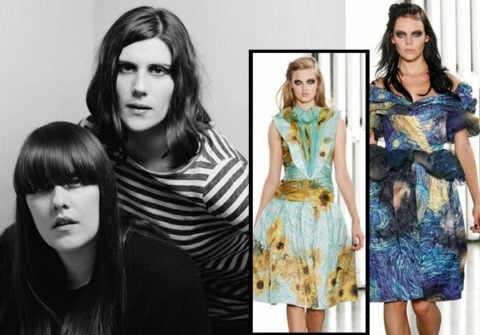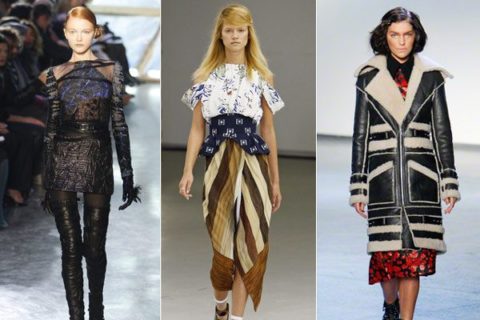Kate and Laura Mulleavy on Sequoia trees, Frankenstein and why there are no people on the Rodarte moodboards


In the world of ready-to-wear fashion, Laura and Kate Mulleavy of Rodarte could almost un-exaggeratedly be referred to as gods among designers. Artists. Outsiders. The real deal. Since their label’s launch in 2004, the sisters, 32 and 33 respectively, have been quite solidly staying a cut above the rest with their wise-beyond-their-years artistic references, their ability to seamlessly merge fashion and art and their knack for creating wearable masterpiece after wearable masterpiece with not a fashion degree between them. Between their Van Gogh–inspired spring collection, their somewhat controversial Australian Outback fall outing and their current collaboration with the L.A. Philharmonic, the designers hit Toronto earlier this week for a fête in their honour at The Room at the Bay. We were lucky enough to be let into their world for a little while.

Tell us how you got involved with creating the costumes for the Don Giovanni opera.
Laura Mulleavy: Last spring we saw Anna Wintour at an event and she suggested us to be part of it. Frank [Gehry] needed a designer to work with on an opera that the L.A. Philharmonic was putting together, and they asked us.
It was a year of work, and progressively, it would get more and more and more intense, but it feels like it was really such an incredible thing that we got to be a part of and I’m so proud of it. It was really beautiful and I could probably watch it a hundred times, so it’s really amazing.
Kate Mulleavy: We didn’t have preconceived ideas of what Don Giovanni needed done—considering it was one of the most famous operas ever written, it’s been done thousands of times. It’s probably a good thing we didn’t go into that with the weight of that so in a sense, it was very freeing. But you do learn a lot, and it makes you appreciate opera on a completely different level. I think one of the most beautiful things about opera is that you really live with the music, the more you hear it.
It’s such a different experience and an emotional connection and on some level, compressing music into digital files and all those things really loses half of what’s so amazing about it.
What with the success of your costumes for Black Swan and now this collaboration, would you ever consider working on costumes that were less theatrical, more everyday?
Laura: Everyday costumes are totally different—it’s a different world with costume design. There are so many different types of worlds you can build with costume designs, so we’re down, really, for anything if it’s a creative match for us.

Is there a thread that remains through each of the collections and the projects that you work on?
Kate: One thing I’ve always said is that it’s really important as a designer, as you evolve, for people to really see that it’s your work. I mean, no matter how diverse you are from collection to collection, it’s kind of the thread that you weave through the years that no matter who the designer is, I think if they’re a well-known designer in terms of being appreciated for their creative contribution, most people look at it and see a connection. At the same time, it’s important to try to do something that’s different because you have to have that as well to be excited about what you’re doing and move forward, and hopefully do new things. So I think it’s a combination of the two. The thread for us is the personal connection to what we do, and there are many parallels to even California, where we’re from, and just certain elements where I know there’s an intrinsic way we think about things.
What is it exactly about California that inspires you so much?
Kate: California is a place that’s based on extremes. When I try to explain to somebody that maybe hasn’t been there, and especially if you come and you just have one version, it’s about growing up in a place where there are the largest living organisms in the world, the largest trees—the Sequoias are literally as big as the Empire State Building in their diameter. If you compare the two they’re relatively similar; they’re similar enough in size that it’s pretty amazing.
Laura: I think that it’s a city block that they’re saying is the diameter, cause they’re big, but not that big.
You talk a lot about places and scenes that inspire you. Do people ever make it onto that list?
Laura: We like things that are a little more abstract, because you can kind of bleed what you want into it. In the sense that we don’t design for ourselves, I think we are designing about things that we know and love or are interested in, and in that way it becomes really personal and selfish. But it’s not even for us, it’s just about things that we think are interesting. I think people don’t play so much into it. Well, we did do a collection about Frankenstein.
Kate: Well, he’s a monster. Well he is human; I guess that’s the point about Frankenstein in a weird way.







